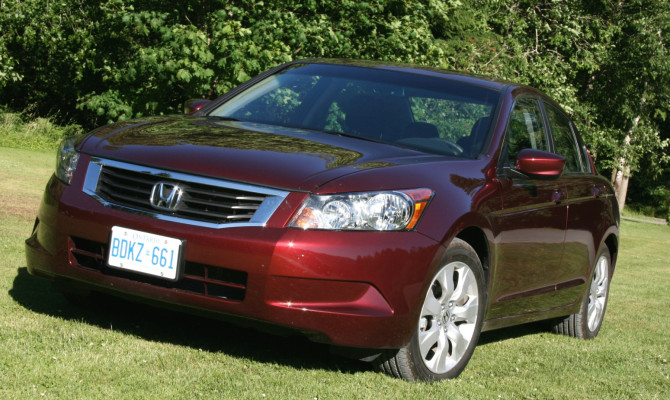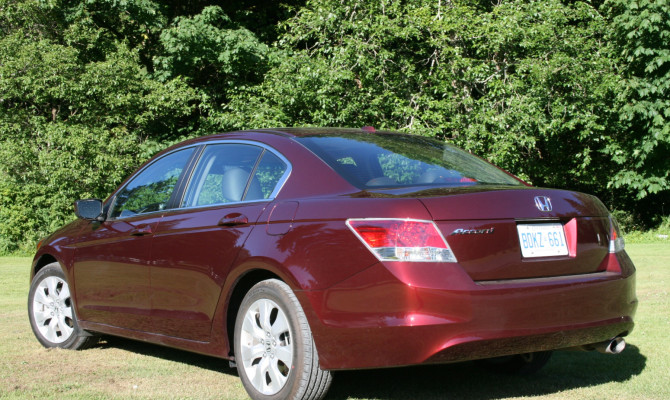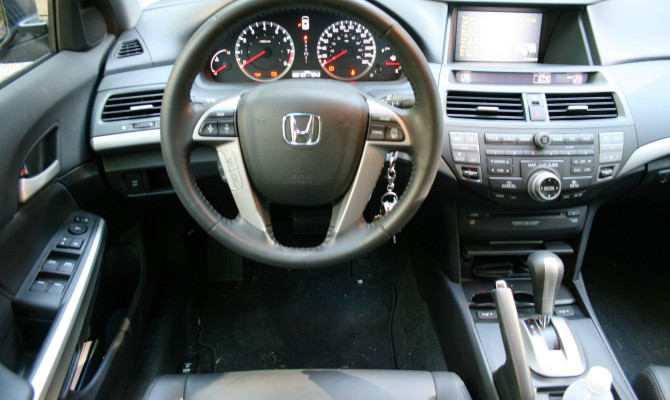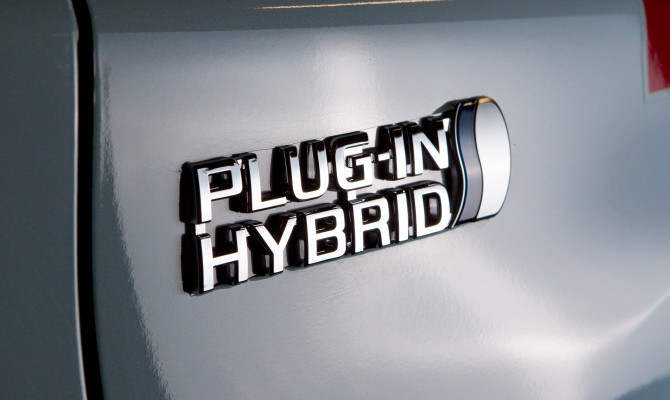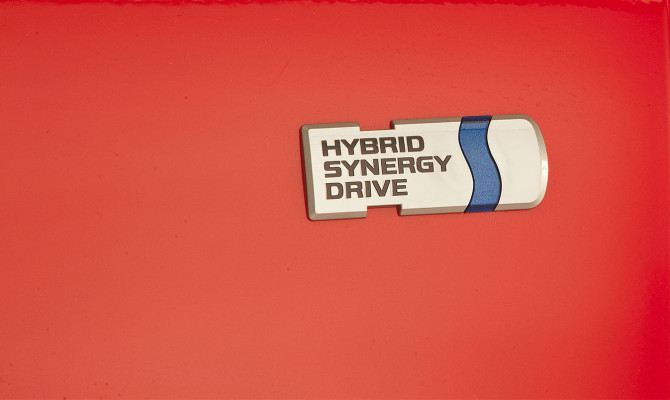“A Canadian family transportation favourite, the Honda Accord sedan is a top used car choice with a solid reputation for dependably and value.”
The very first Honda Accord, introduced to Canadians back in 1976, was about the same size as today’s Civic sedan and it had a less-powerful engine.
When the eighth generation Accord was introduced in 2008, it was officially classified as a “large car” and came with a 190-horsepower 4-cylinder engine, or an even more powerful optional V6.
Eight-gen Accord did get a mild mid-life facelift for the 2011 model year and it included new front-end styling and some interior improvements. A new base SE trim line also replaced the previous LX trim.
The four-cylinder is by far the most popular engine choice of Canadians, but there was also an interesting upgrade to the optional 3.5-litre V6 in 2011. Called Variable Cylinder Management (in Sedan editions only – not Accord Coupe), this system can improve fuel economy by shutting-down two or three cylinders, during light load driving conditions. Highway fuel economy with this V6 is almost the same as the four-cylinder version of Accord.
No changes were made to Accord for the 2012 model year. The big changes came in 2013 when a landmark, smaller and lighter, all-new ninth generation Honda Accord was released.
Although lighter, the 2013 Accord is structurally stronger than the previous generation Accord and although its outer dimensions are more compact and it has a shorter wheelbase, it has more rear seat legroom and a slightly larger trunk, according to Honda.
Major changes also happened under-hood with the release of Honda’s new “Earth Dreams” engine technology. This could also be linked to a high-efficiency new CVT automatic with “G-Design Shift Logic”. This feature provides quicker acceleration, as it’s faster acting than a conventional automatic transmission.
In addition to being considerably more fuel efficient the 2.4 litre four-cylinder “Earth Dreams” editions of Accord are also super-clean running and complies with PZEV (partial zero emission vehicle) requirements in the US. This engine also supplies more power at low engine speeds, just where you need it, on take-off, on a hill or when merging into freeway traffic.
Its city/highway fuel economy ratings of 9.1/6.6 L/100 km, with the CVT, are outstanding for a family-size sedan. A 6-manual was available with the base LX and Sport trim levels and a conventional 6-automatic came with the V6 engine editions.
In addition to four-door sedan and two-door coupe models of Accord, there’s also a five-door hatchback/cross-over version called Crosstour, which was originally called Accord Crosstour when introduced in 2010. A new plug-in hybrid (sedan) version, called Accord PHEV, was also introduced in 2014. It’s powered by a new two-motor hybrid system that operates continuously through three modes; all-electric, gasoline-electric or direct-drive.
Accord sedan has consistently been a top performer in crash tests performed by both the IIHS and the NHTSA in the US. It’s also highly rated by Consumer Reports for dependability and it has better resale value retention than most in the class.
A Canadian family transportation favorite, the Honda Accord sedan is a top used car choice with a solid reputation for dependably and value.
Price Check: 2011 – 2014 Honda Accord (March 2015)
Year Edition Expect to Pay Today
2011 EX-L Sedan $16,000 to $19,000
2012 EX-L Sedan $18,000 to $22,000
2013 EX-L Sedan $21,000 to $25,000
2014 EX-L Sedan $24,000 to $28,000
Prices vary depending on a used vehicle’s condition, mileage, usage and history. A complete mechanical check should always be performed by a reliable auto technician prior to purchase.
Safety Recalls: 2011 to 2014 Honda Accord:
2012: The side curtain airbag inflators may have been incorrectly manufactured and, as a result, one or both airbags may not deploy as intended. Dealers will inspect and, if necessary, replace one or both side curtain airbag assemblies.
2013: The fuel tank may have been manufactured incorrectly and could leak gasoline. Dealers will replace the fuel tank.
Hybrid vehicles have never been more affordable and certainly well worth consideration, if you’re thinking about buying a new vehicle…
Tesla CEO Elon Musk recently equated hybrid vehicles to early amphibians that hopped out of the oceans, learned to survive on land and eventually disappeared.
Ironically, if the electric vehicle (EV) evolved in a similar way, Tesla (an exclusively EV company) wouldn’t exist right now and this would probably be in a vibrant Hybrid Age!
Despite the early birth of production EV, hybrid (HEV) and now plug-in hybrid electric vehicle (PHEV) sales continue to rise, new models continue to arrive and at least three all-new PHEVs are expected later this year.
A HEV functions just like, or similar to, a conventional gas-engine vehicle from a driver/owner perspective. It consumes substantially less fuel, especially in an urban environment, and a regenerative braking system can greatly extend the life of brake friction pads.
A PHEV increases the energy saving, money saving, and greenhouse gas reducing advantages by tapping into an electrical source and pulling relatively inexpensive electrical power off the main grid. It then uses this energy to go further on electrical power alone. How far depends primarily on the capacity (size) of its storage battery, but also on the drive system, the terrain and weather conditions and how the PHEV is driven.
Lugging around a bigger battery obviously increases the weight of a PHEV and it takes up either passenger cabin or more likely trunk cargo space. The latest lithium-ion battery packs are lighter and more compact, but the space sacrifice is something that a prospective owner must be willing to live with.
Hybrid owner feedback is generally very positive and the fuel savings can be substantial. That said, you generally pay a premium for this technology, but that gap is rapidly narrowing. Last year, GM slashed $5,000 off the price of its popular Chevrolet Volt, the best selling PHEV on the market. While GM marketing promotes the Volt as an “extended range” electric vehicle, as its road wheels are always driven by an electric motor, it’s still classified as a PHEV. A small on-board gas engine generates electricity, when necessary.
The new Honda Accord Hybrid (a HEV) further blurs the differences between HEV and PHEV, as it uses the same two-motor powertrain used in the Accord Plug-in Hybrid (a PHEV edition that’s currently only sold in selected markets). At speeds under 80 km/h the road wheels are driven by an electric motor and its Atkinson cycle gas engine is only used to generate electrical power, when needed.
The current list price for an Accord EX-L is $29,455 and the Accord Hybrid starts at $29,590, which is only $135 more. The top-line Accord Touring V6 sells for $35,400 and the Touring edition of Accord Hybrid is $36,690, just an extra $290. The price differential is almost non-existent.
Choosing HEV or PHEV boils-down to whether an owner can take full advantage of the plug-in electrical storage feature and normal driving commutes are within the electric-only speed and distance range of the PHEV. A low-speed urban driving commute allowing the PHEV to be charged at home overnight and topped-up again while at work, during the day, would be an ideal scenario.
While the popularity of hybrid vehicles continues to grow, barring a sudden spike in the price of oil/gasoline, a meteoric rise in the popularity of alternatives to the old reliable gas engine vehicle is unlikely. Then again, who knows what the future, or the next twist in evolution, will bring. Hybrid vehicles have never been more affordable and certainly well worth consideration, if you’re thinking about buying a new vehicle.
If you like the idea of a smart looking car that is well equipped and powerful, you might want to move on an Accord Coupe… (more…)
The Accord plug-in coaxed me into a little competition with myself every time out to achieve maximum fuel efficiency…
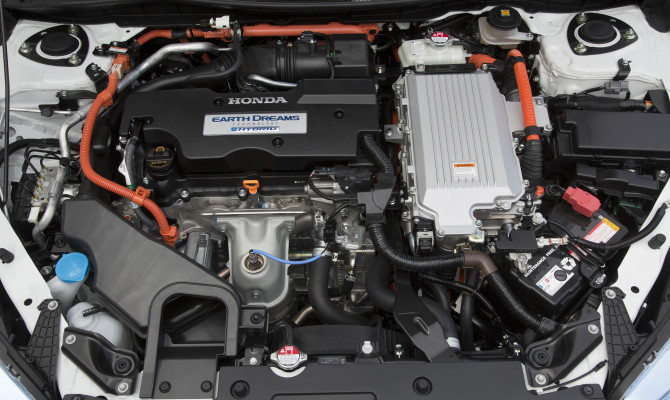
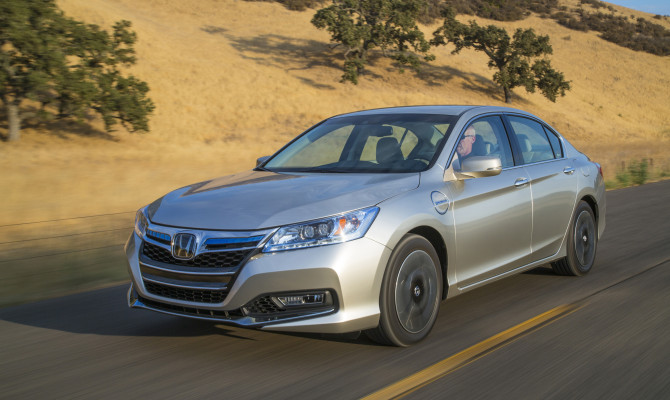
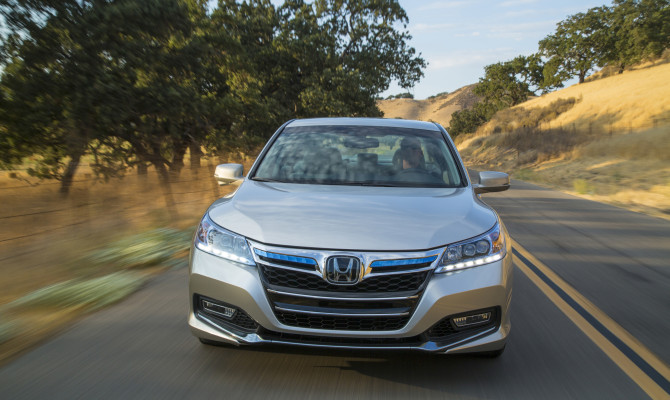
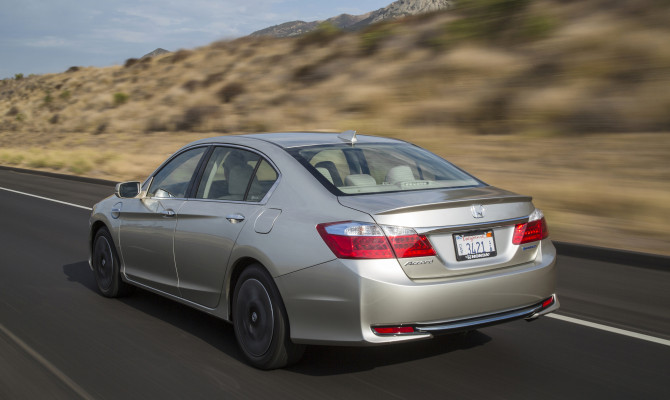
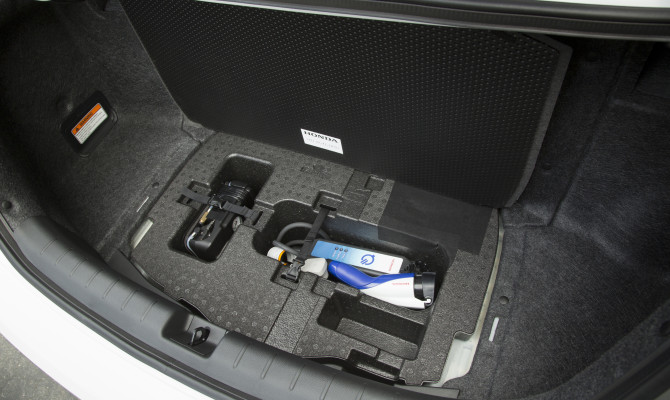
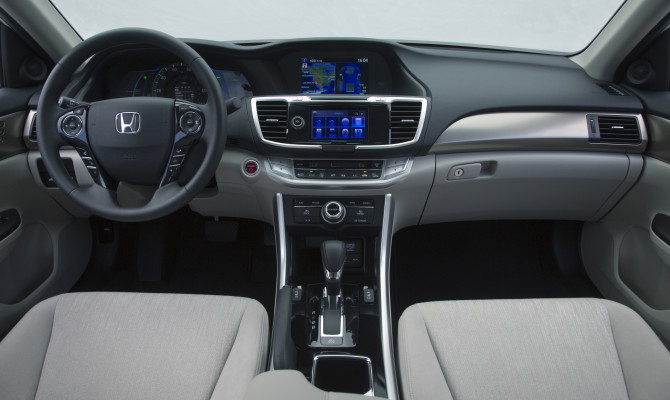
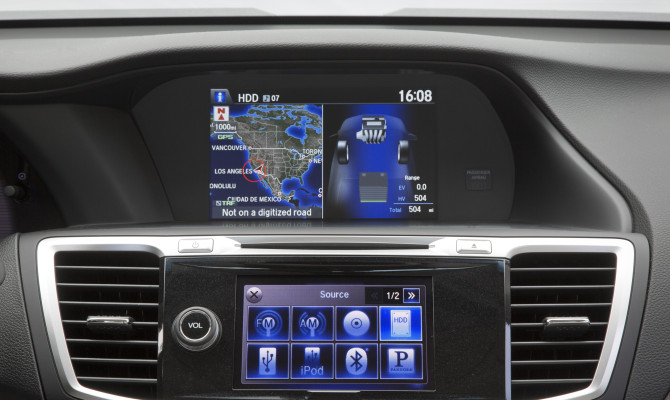
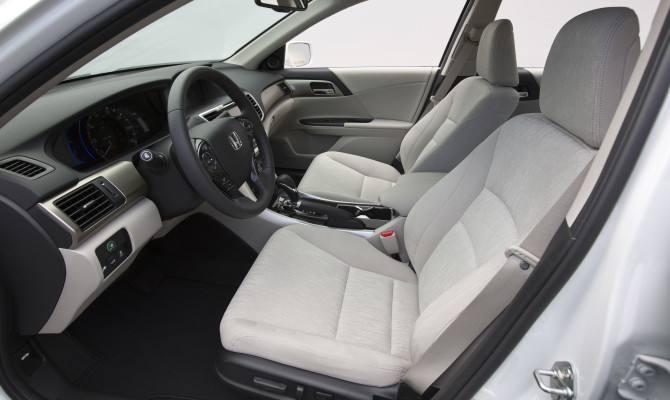
They should just call the 2014 Honda Accord Plug-in Hybrid Sedan The Gas Miser.
The car is here for market testing right now but surely, it will see production next year and arrive in dealerships later in the year. And when it does, sell your shares in Big Oil.
It only sips gas by the spoonful; how else do you account for an easily achievable 4.1 L/100km combined city/highway fuel economy rating?
Drive gently around town and you can purr along in all-electric mode for between 20 and 28 kms depending on road conditions. You won’t achieve that all at once, unless it’s the dead of night on a flat road, without any other traffic and green lights all the way.
However, it is estimated that if you achieve that 20-plus all-electric ride during a 100 km journey, the power unit will consume electricity/gasoline at an equivalency of around 1.6 L/100km. In truth, it’s hard to put a real life meaning into that number but it is useful when comparing with other similarly equipped cars.
But when you look at that number and the low gas/hybrid combined fuel performance, which enables you to journey 800 kilometres on one tank, it does plant the notion in one’s head that plug-in hybrids are the way to go for a while before we reach hydrogen fuel cell nirvana.
The car is powered by Honda’s first two-motor hybrid system, and uses a new, delightfully named, Earth Dreams 2.0 litre i-VTEC 4-cylinder engine producing 137 horsepower, teamed with a powerful 124-kilowatt (kW) electric motor. Electric driving is supported by a 6.7 kilowatt-hour (kWh) lithium-ion (Li-Ion) battery, and total system output is 196 horsepower.
If your eyes glazed over at the obligatory statement of power unit specifications, join the club! Fuel economy interests me more.
Like every other car with green aspirations that I have driven, it coaxed me into a little competition with myself every time out to achieve maximum fuel efficiency. It’s fun to select EV mode and pull away in the morning in silence, operating as a pure electric vehicle. Even in stop and go traffic, it works well, the regenerative braking keeps topping up the battery.
As the speedo creeps up the gas engine kicks in quietly and smoothly. If you select HV mode it operates as a conventional hybrid.
I drove a production version of the Ford Fusion Energi a few months ago, which is similarly equipped and impresses equally with its infrequent need to visit the pump. The plug in Toyota Prius is another contender for the green dollar. The Ford is probably the nearest equivalent and sells for around $35,000 so that will be the sticker price to beat.
I would like to hear from early adopters of the plug in hybrid technology about their experiences.
Contact:
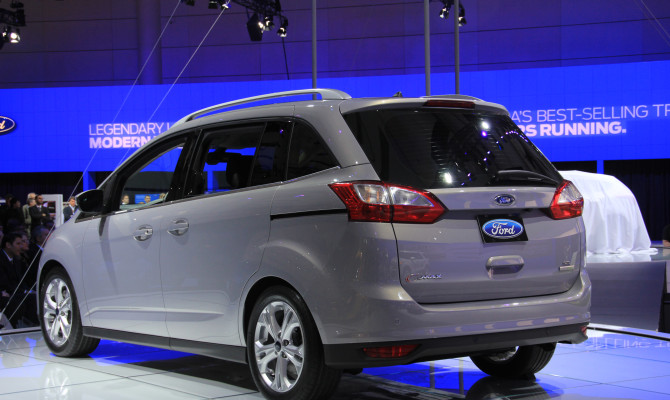
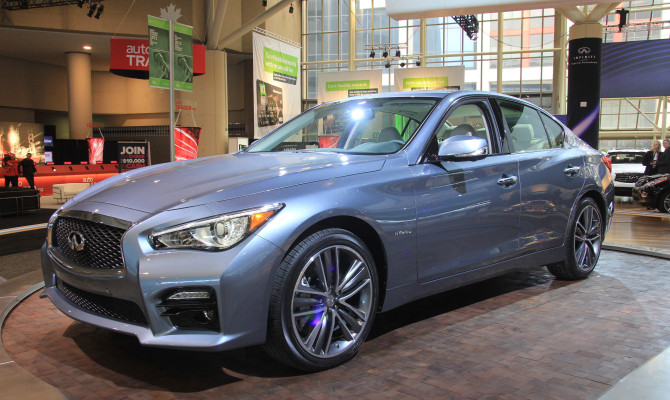
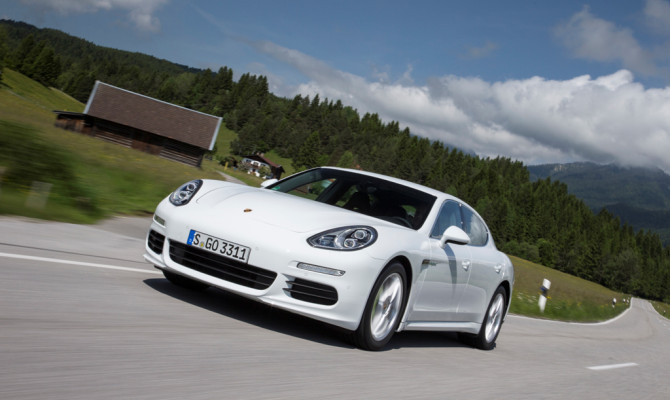
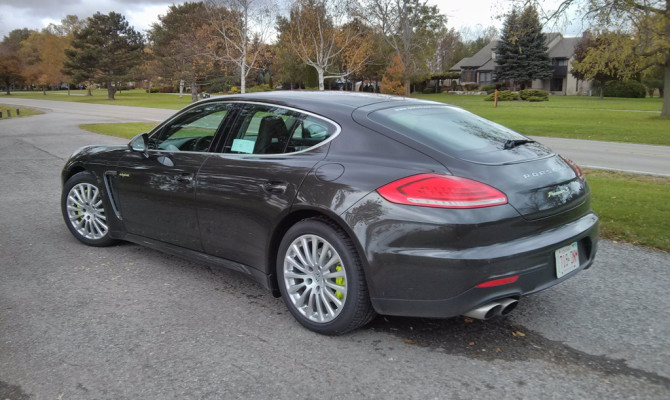
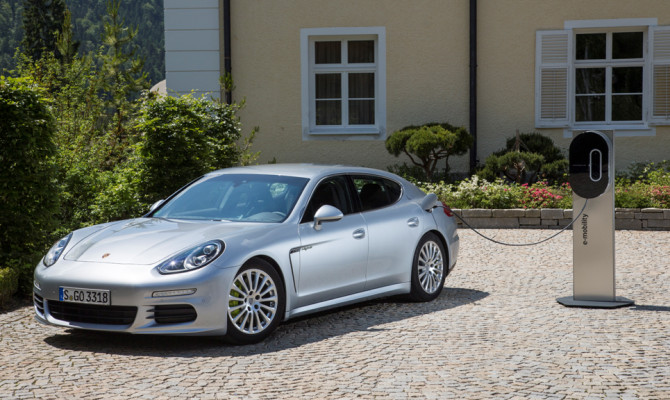


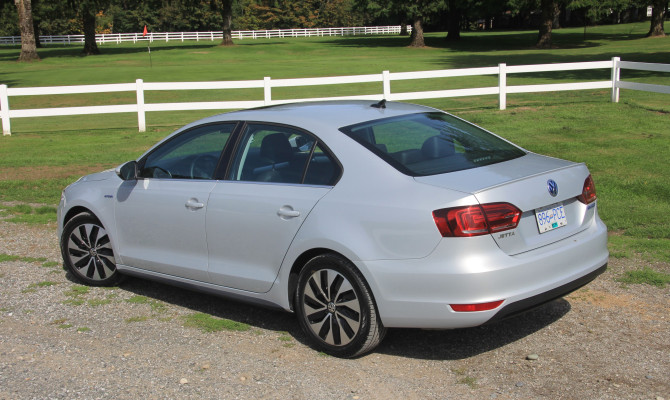
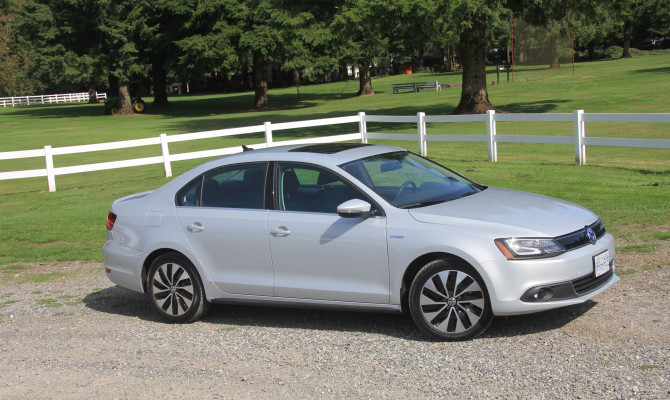
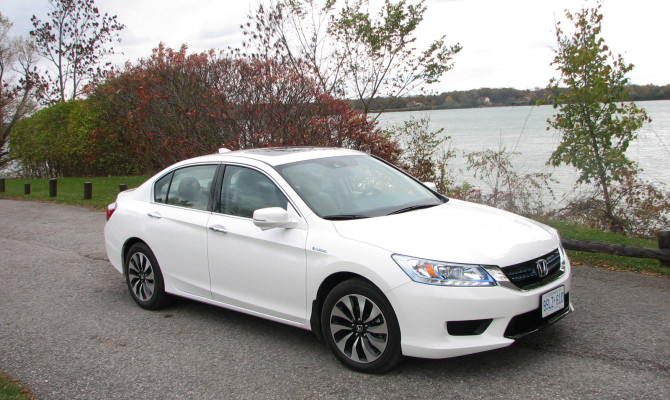
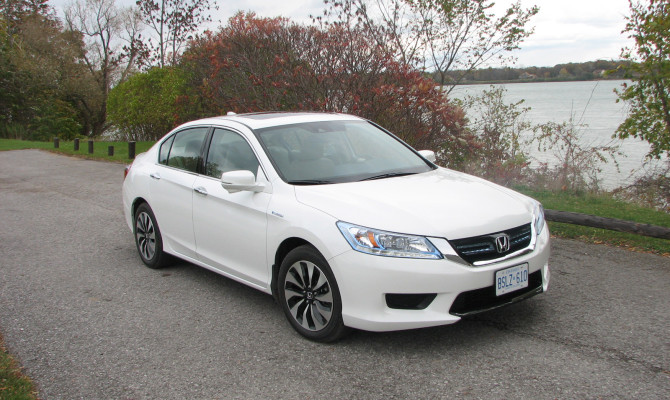
Hybrids not only save on gasoline, they also save on maintenance, especially brake system repairs, and they typically come with longer drivetrain warranties…
There’s a new breed of hybrids hitting the streets that are closer in performance and price to their gasoline counterparts. (more…)
Recent Comments
- { Enjoyed your Forest of Bowland in the BMW X5M, particularly the photo of the BMW in front of the main part of Stonyhurst College where... }
- { Bantam designed the Jeep, not Willy's or Ford. The American military gave the original Bantam prototype to Willys and Ford to copy. There is plenty... }
- { All Escalades come with a 6.2-lilter V8 engine that produces 420 horsepower. A six-speed automatic is the only transmission offered and drives the rear wheels.... }
- { Alexandra is an excellent journalist. }
Popular Posts
- Journey to a ‘Sparkling’ Luxury Okanagan Resort “Four lucky readers will put a Dodge Journey’s weekend-...
- The Need For Speed: Hike Those Highway Limits More than half of those polled believe the province sho...
- Drives-U-Crazy… Erratic drivers. An early morning drive from Kelowna to Vancouver is nor...
- Readers Respond: The Pros and Cons of Increasing B.C. Speed Limits Increasing the speed limits will only increase risk to...
- Honda CR-V Review: The Compact Crossover To Get Things Done The CRV is a very stylish and aerodynamic crossover veh...


